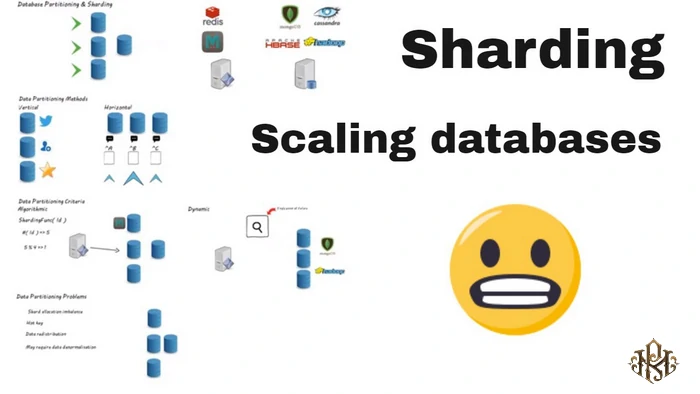Sharding is a method used in distributed networks and blockchains, and its purpose is to improve the scalability of the system. This method allows networks to divide large volumes of data into pieces (shards) across the network, so that each shard is managed and processed separately.
In a sharding system, the entire data is divided into smaller pieces (shards) and each shard contains part of the data and transactions. Each shard is processed independently and in parallel, and the transactions associated with it are carried out within the same shard. This will increase the performance and capacity of the system significantly.
Using sharding in blockchain networks brings the following advantages:
- Scalability: by dividing the data into smaller shards, processing capability and system capacity are simultaneously improved. This allows the network to process a large volume of transactions simultaneously and at high speed.
- Cost reduction: Using sharding can reduce operational costs because it reduces the need for full network resources to process all the data.
- Fast response time: By distributing and parallel processing of transactions in shards, the response time of the system is improved.
- Resistance to attacks: By dividing data and network performance into separate shards, the network will be more resistant to heterogeneous attacks (such as DDoS attacks).
- Increased security: By using sharding, the risk of 51% attacks that exist in some consensus algorithms is reduced, because the attacker must control more than half of the shards to change the system.and verify valid transactions. This is practically impossible.

In general, sharding provides a significant improvement in the scalability of blockchain networks, but it also brings certain challenges. Some of the challenges associated with sharding are:
- Coordination: By dividing data and processing into different shards, there is a need for proper coordination and effective communication between shards. This may be subject to challenges due to network latency, asynchronous execution of transactions, and other issues.
- Security: Each shard must be protected and protected in terms of security. Attacks may be limited to a single shard, but introduce new risks to the entire system. Also, there is a need to guarantee the authenticity of transactions between shards.
- Reliability: If one or more shards fail, the reliability and overall performance of the system may be affected. Therefore, proper strategies for error management and recovery in case of problems are required.
- Data homogeneity: Sharding may lead to heterogeneous data homogeneity across the network. In other words, different parts of data may exist in different shards, which may cause problems in data processing and analysis.
Sharding is used as an important method to improve scalability in blockchain networks, but its correct and appropriate implementation requires attention to technical aspects, security and coordination between shards.
some sharding methods
- Sharding based on the hash function: In this method, data is allocated to shards based on the hash function. The hash function uniquely maps input values to shards. For example, if a hash function is used for wallet addresses in a blockchain network, transactions associated with a wallet are assigned to a shard.
- Sharding based on geographic regions: In this method, shards are defined based on geographic regions. For example, in a blockchain network used for a specific country, each shard can be assigned to a specific province or geographic area. This method can be efficient in geographic scaling and, for example, local transactions between neighbors are processed on a shard.
- Sharding based on data type: In this method, data is divided based on specific type. For example, one shard may be dedicated to storing financial transactions, another shard to store user information, and another shard to store files. This method can provide reasonable scalability if the data type varies.
- Random sharding: In this method, data is randomly assigned to shards. This method randomly divides data between shards and each shard processes them independently. This method is simple and the need for coordination between shards is minimal, but transactions related to a user or a data source may be located in different shards.




